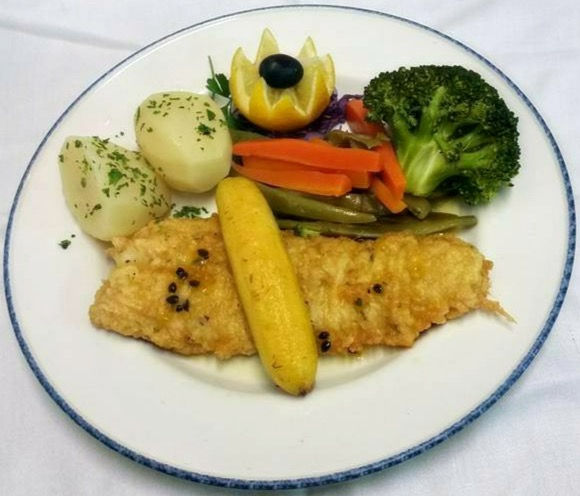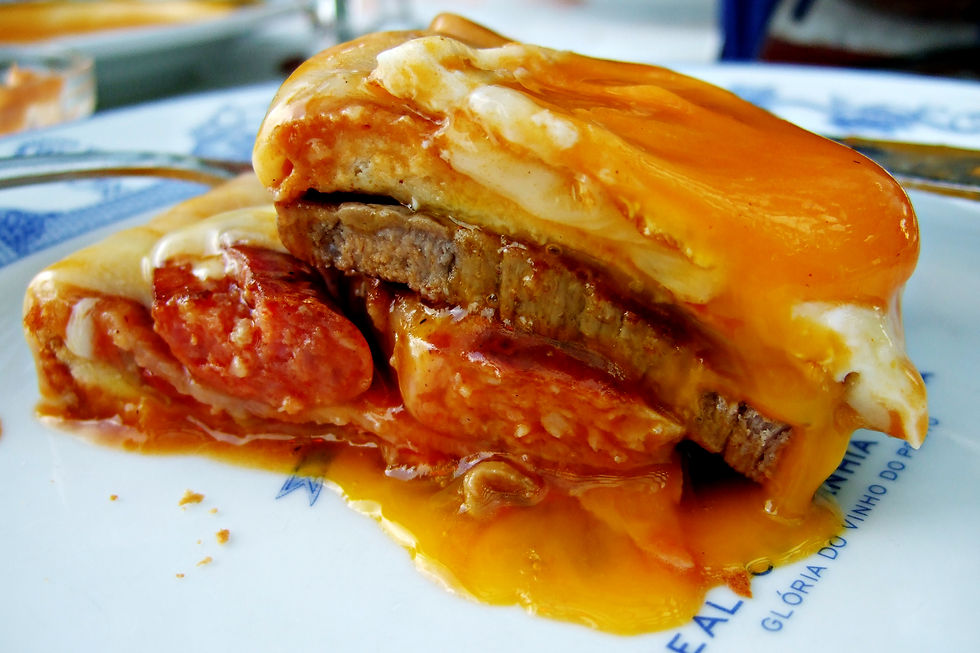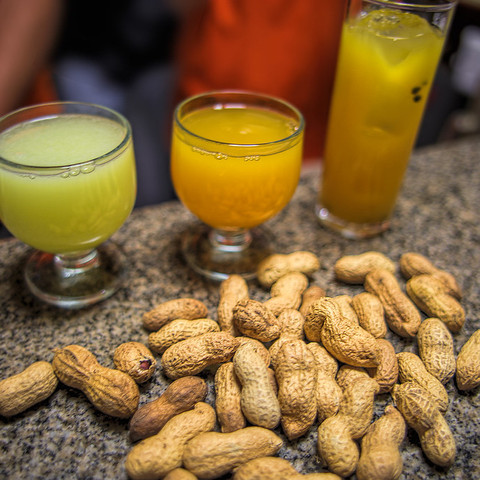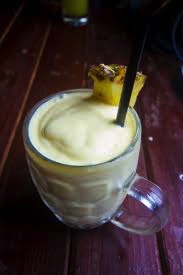I am often asked what constitutes authentic Portuguese cuisine as not many people know about Portugal's typical dishes, instead assuming that Nando's is all we eat (fun fact: Nando's doesn't exist in Portugal). Although I enjoy Continental Portuguese food, it's Madeiran cuisine that I truly love and grew up with, and so I'll start with those:
1) Espetada

Although espetada is typical of the mainland too, it is done slightly differently in Madeira. Here, only tender beef, bay leaves, and thick salt are used and a branch from the bay leaf is sharpened and used as the skewer to turn the meat over a flame. It's common to be invited over for an 'espetada' and many of my birthdays have been celebrated in Madeira in this form. Personally, I'm not a massive fan of beef so this isn't my favourite dish, but it is extremely popular and well-loved by most of the islanders.
2) Picado

Similar to espetada, picado uses diced beef and bay leaves, but its mushroom sauce gives it a lot more flavour. It is often made to share with others and has been one of my favourite meals since I was a kid.
3) Espada com Banana e Maracujá

This dish consists of scabbard fish with a fried banana on top and passionfruit sauce. Now, I know it sounds gross, but honestly this is one of my favourite meals. Admittedly, I've never seen anyone cook this at home, but this typical tourist dish still deserves a place on the list for its exceptional flavour. My favourite restaurant to have this at is Monumental Grill in Funchal.
4) Bolo de Caco

Bolo de caco is Madeira's version of garlic bread and a god-send to the island.
5) Carne de Vinha d'alhos
The name of this dish means 'meat of wine and garlic' and is usually eaten at Christmastime. Every time I go to Madeira, I try and visit one of my favourite restaurants: Casa de Chá, where they often serve this as an appetiser during the holiday season.
6) Milho Frito

Milho frito literally translates to 'fried corn' and tastes similar to polenta. My grandma used to make this a lot when I was growing up, and although I'm not a fan of milho frito, it reminds me of her and brings back good memories (including my brother asking for a whole batch and not eating any of it).
7) Lapas Grelhadas

Limpets are very common on the island and are served with lemon and butter. This is one of my favourite Madeiran dishes and you can't get any fresher than the morning's pick!
8) Poncha & Niquita
Although not a food, poncha is a staple of Madeiran culture, with locals often 'going to the poncha' as an Englishman would go to the pub. This concoction typically has a lemon flavour and is found in bars and at the 'arraiais' (town parties), however I prefer the passionfruit flavour, which reminds me of my favourite cocktail (a porn star martini). Another typical (but much less popular) alcoholic drink is a niquita, which is similar to a pina colada in consistency and taste, made with pineapple, sugar, and ice cream.
9) Sopa de Trigo

This soup is delicious and has many ingredients, including wheat, pork, potatoes, and a lot of veg. It's exactly how I'd imagine a 'hearty soup' to be, although I only started eating it more as an adult, as growing up my parent's soup of choice was 'sopa de agrião', or watercress soup.
10) Brisa & Laranjada

Before moving on to the mainland's dishes, I thought it was important to add two drinks I grew up with: Brisa and Laranjada. Brisa maracujá is a passionfruit-flavoured fizzy drink and was always my drink of choice in restaurants and at parties, whereas Laranjada is a bright orange fizzy drink that always reminds me of my paternal grandparents. In London, my parents would always buy foodstuffs from the Portuguese deli, including Brisa, and I remember a friend of ours from school loving it and always asking for more.
11) Prego / Bifana

If it wasn't clear up to now, meat is a staple of Portuguese cuisine. A prego is essentially a steak sandwich, whereas a bifana is a pork sandwich, and McDonalds used to sell a 'McBifana' and 'McPrego' in Portugal when I was younger. In Madeira, a prego often comes with bolo de caco bread, however as mentioned previously, I'm not a massive fan of meat so this dish isn't one of my favourites.
12) Pastel de Nata

This custard tart is probably one of Portugal's most famous foods, and rightly so. Lisbon's 'Pastéis de Belém' is known for their pastéis, however you'll have to wait in line to try one. Nonetheless, most cafés in Portugal sell these and you can't go wrong with them. If you want a peek into the music I listened to as a child, check out 'Doce Pastel de Nata' here for a lil bop.
13) Francesinha

Francesinhas are originally from Porto and consist of bread, ham, cheese, quite a bit of meat, often an egg, and a hot sauce, alongside some chips. Although this is one of my favourite meals in Madeira, at Faial Mar restuarant, I don't actually like most francesinhas elsewhere.
14) Pão com Chouriço
This literally translates to 'bread with chorizo' and that is exactly what it is. This bread is delicious and is one of the foods I have loved since a child and would 100% recommend.
15) Caldo Verde

This is one of my favourite Portuguese soups, consisting of kale, chorizo and potatoes, and is often served as a starter.
16) Feijoada
Most people associate feijoada with Brazil's version, which although I enjoy, is quite different to the Portuguese version. We tend to use white beans, carrots, and lots of different meats (some of which me and my brother, as the appointed 'city kids' refuse to eat, including offal).
17) Polvo à Lagareiro

Again, most foreigners are better acquainted with Spain's version of octopus (which I actually prefer), however the Portuguese version is made with olive oil and usually has thicker pieces. Although I'm not a massive fan of this, it's eaten pretty often in Portugal.
18) Sardinhas

Sardines are a big part of Portuguese cuisine, and although this dish isn't high on my list, it is a staple nonetheless.
19) Bacalhau
Bacalhau is salted cod and is one of the most famous Portuguese dishes. Again, it's not my favourite, but we eat it at Christmas and I like it 'à brás', which combines eggs and potatoes with the fish. Nonetheless, if you ever find yourself in a Portuguese supermarket and smell a strong, fishy scent, you can guarantee that it's due to this speciality.
20) Tremoços

I could have used this last recommendation to talk about 'Bolo de Mel' or 'Bolo de Rei', which are both typical cakes, or even about Portugal's doughnuts ('Bola de Berlím'), however I thought it was only apt to mention one of my favourite Portuguese nibbles. When you go to a bar and order a beer (Superbock or Sagres, of course), not only do you get your beer, but you often get tremoços (lupini beans with pepper and parsley), and sometimes nuts or corn too. If you're really lucky, you even get free meat (especially carne de vinha d'alhos in Madeira)!
In Portugal (and a lot of Europe), the food tastes a lot nicer than in London. The fruit is much sweeter, the meat is much more tender, and everything is more flavourful. This is why making Portuguese food in the UK can be tricky and taste a lot worse than in the motherland. This doesn't mean that I've always loved or appreciated Portuguese food - far from it. As a kid, I was actually extremely picky and didn't like most food (Portuguese or otherwise), as all I wanted was spaghetti bolognese. Then I'd go to Madeira, where to make jelly, you'd buy a powdered form, and most people drank UHT milk, which I didn't like. Furthermore, both of my parents grew up on farms in villages, where it was common to kill the animals for meat, and where pig ears, cow tongue, and chicken feet are eaten. As you can imagine, London-born, picky Steph wasn't very impressed. Only as I grew older and started to appreciate new flavours did I start to love Portuguese foods (albeit, not those cuts of meat).









Comments